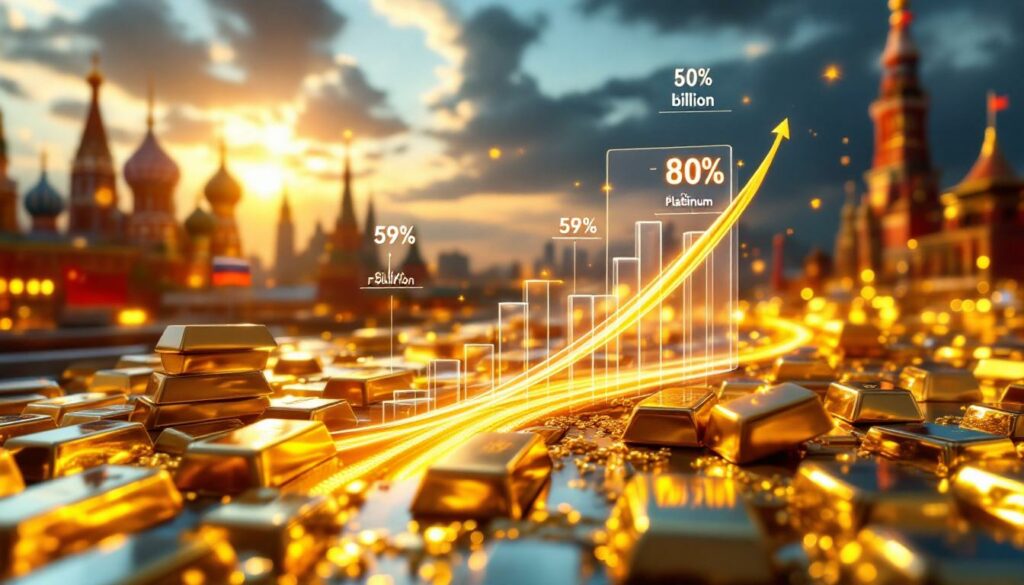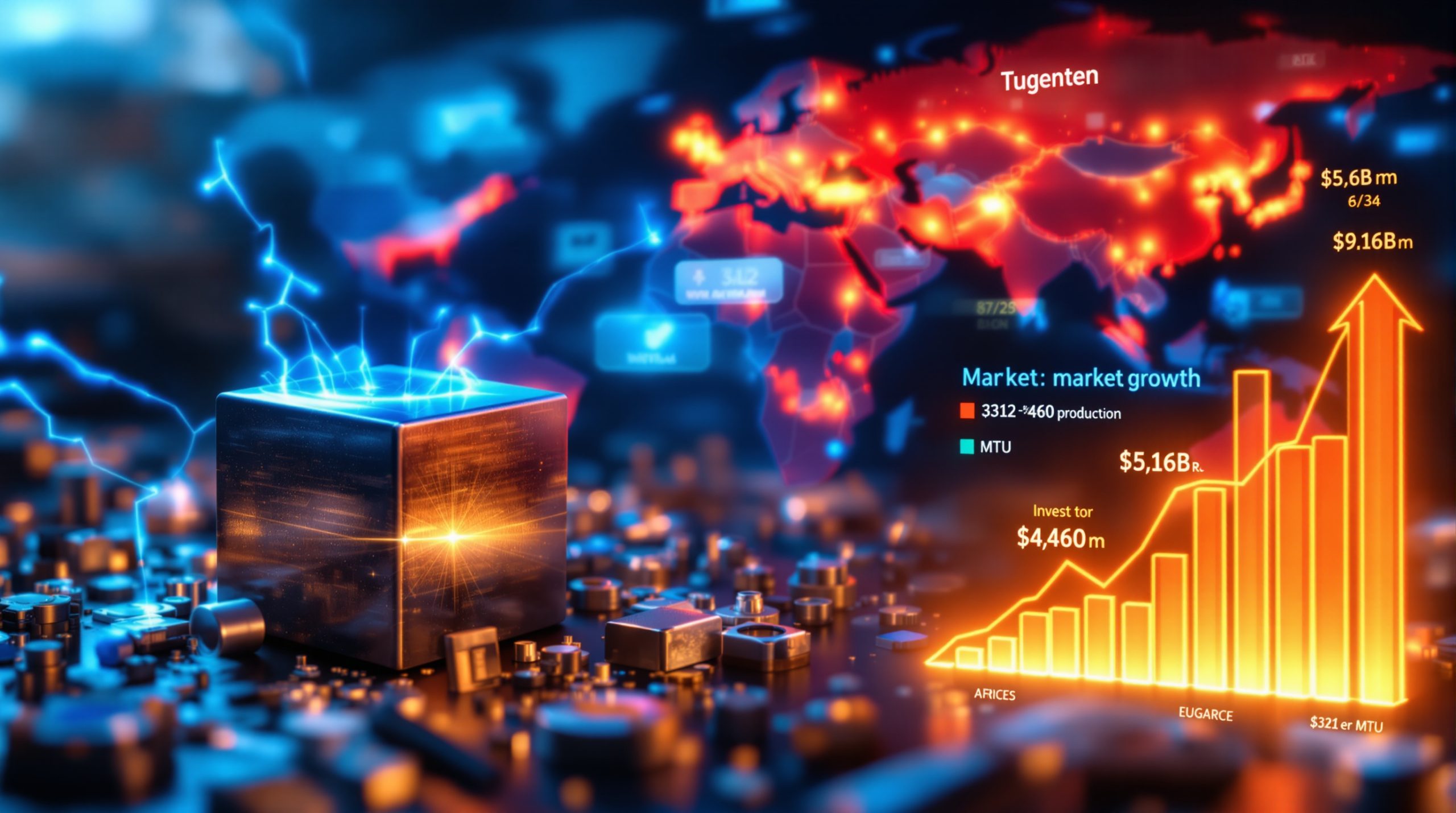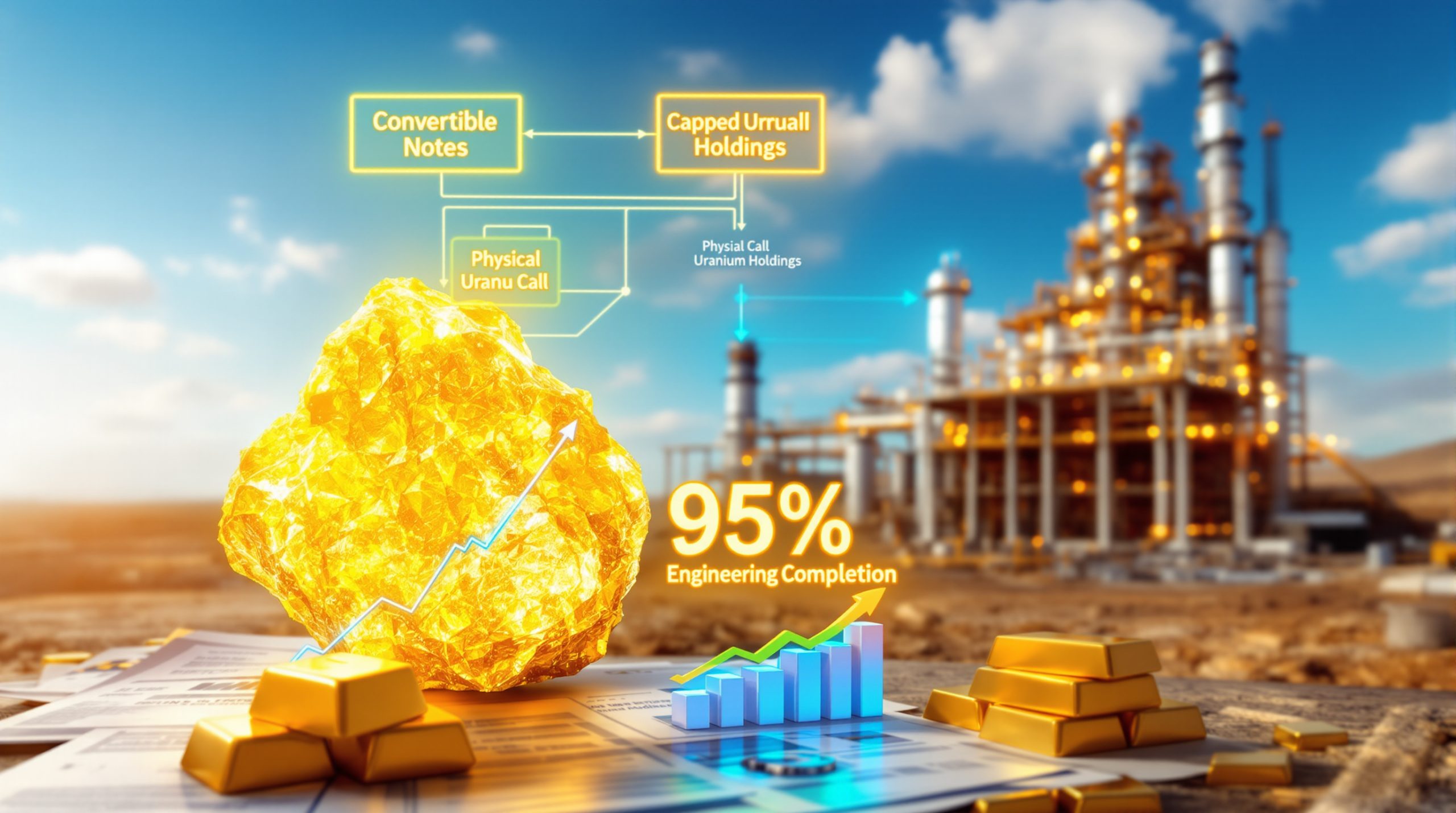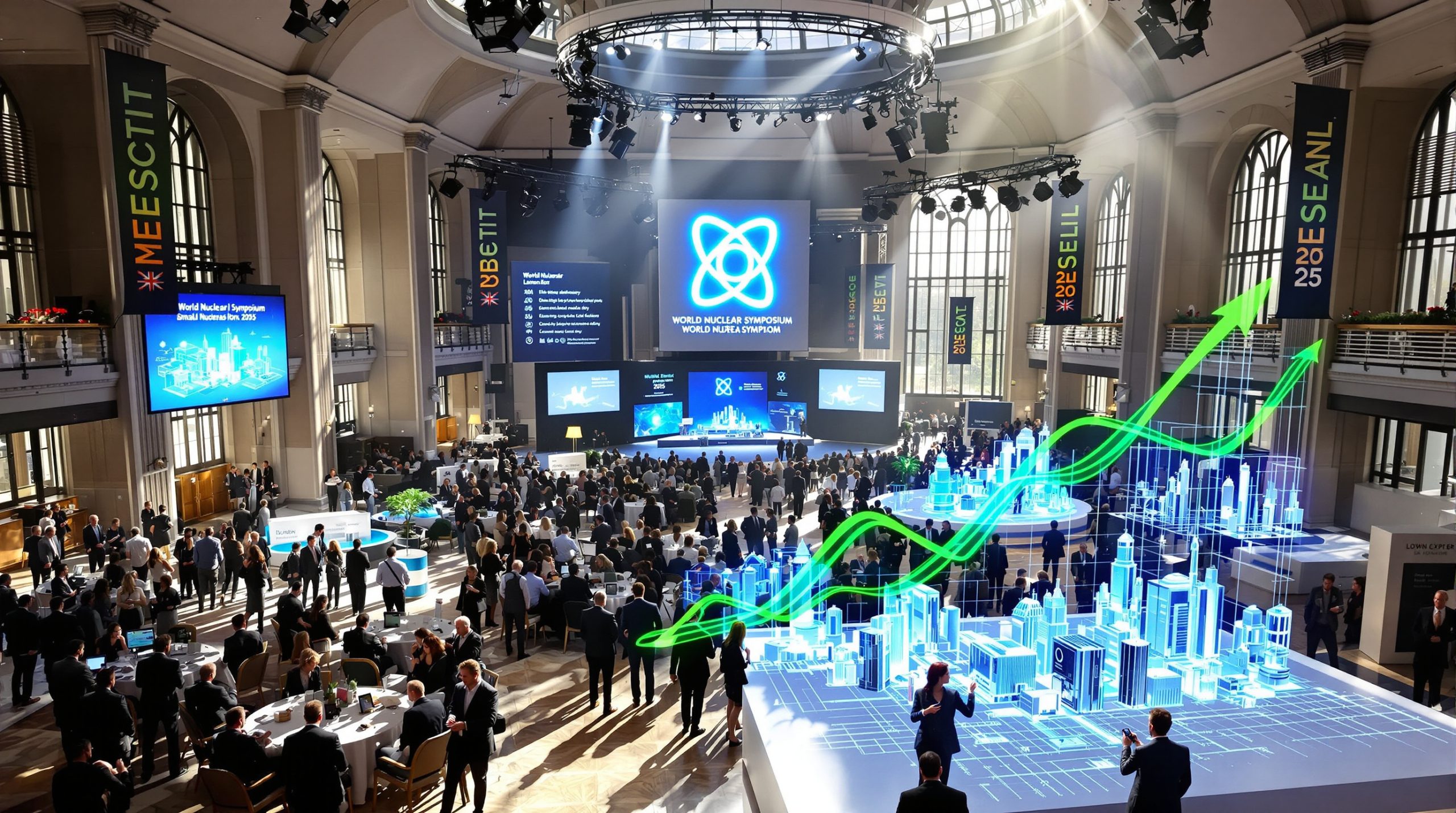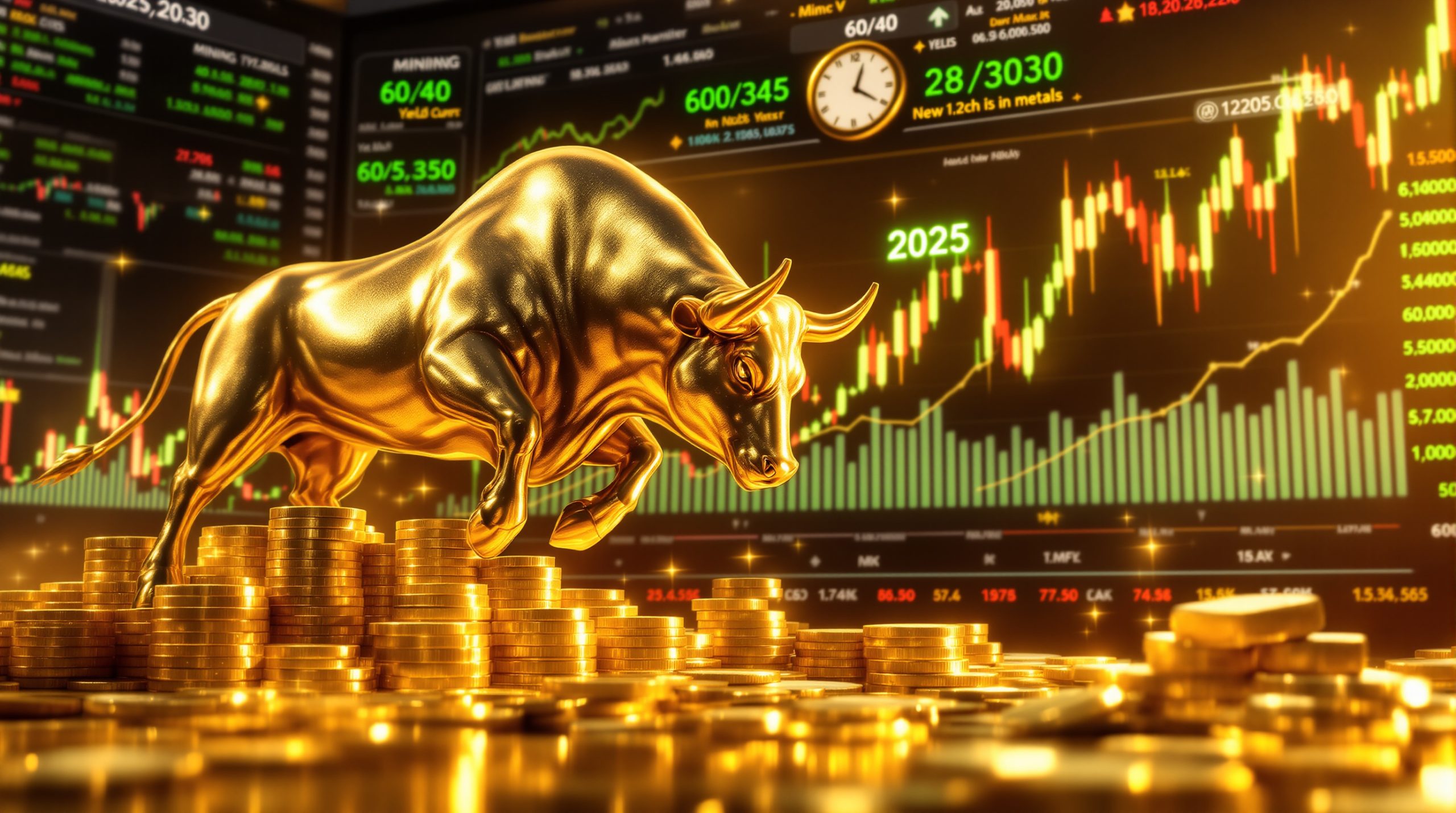The Billion-Dollar Surge: Russia-China Precious Metals Trade in 2025
The precious metals trade between Russia and China has witnessed unprecedented growth in 2025, with Chinese imports of Russian precious metal ores and concentrates surging by a remarkable 80% year-over-year to reach $1 billion in just the first half of the year. This dramatic increase reflects not only changing geopolitical realities but also significant price appreciation across the metals sector.
Gold prices analysis shows prices have climbed approximately 28% in 2025, driven by heightened geopolitical tensions, strategic central bank purchasing, and increased ETF investment flows. Meanwhile, platinum group metals have seen even more dramatic gains, with platinum prices soaring 59% and palladium jumping 38% during the same period.
This trade surge represents a significant pivot for Russia's precious metals industry since Western sanctions began restricting market access in 2022. With traditional trading routes through London and New York effectively closed, China has emerged as the primary destination for Russian metals, creating a new dynamic in global precious metals markets.
"Russia's precious metals industry has demonstrated remarkable resilience by redirecting exports eastward, establishing new trade channels that have not only survived but thrived despite Western sanctions," notes mining analyst Elena Kuznetsova from the Moscow-based Institute for Strategic Resource Studies.
The diversification extends beyond gold to include silver, platinum, and palladium—creating a more robust and multifaceted trade relationship that benefits both nations through complementary economic needs.
Why Are Russian Precious Metals Flowing to China?
Western Market Access Restrictions
Since Russia's invasion of Ukraine in February 2022, Western nations have implemented comprehensive sanctions targeting Russia's financial system and key industries. The London Bullion Market Association (LBMA) promptly removed Russian refineries from its Good Delivery List, effectively barring newly produced Russian gold from the world's largest gold trading hub. Similar restrictions were implemented in New York, shutting Russia out of the two most significant precious metals marketplaces globally.
As the world's second-largest gold producer with annual output exceeding 300 tons, Russia needed to find alternative markets quickly. These sanctions created a fundamental restructuring of global precious metals trade flows, forcing Russian producers to seek new buyers and trading partners outside traditional Western channels.
Beyond formal sanctions, many Western financial institutions implemented self-sanctioning policies, refusing to handle Russian precious metals even when not explicitly prohibited by law. This created additional hurdles for Russian exporters attempting to access international markets.
China's Strategic Position
China has positioned itself as the ideal alternative market for Russian precious metals exports for several key reasons:
- Industrial demand: China's manufacturing sector requires substantial volumes of platinum and palladium for catalytic converters, electronics, and chemical production
- Geopolitical alignment: The "no-limits" partnership between Moscow and Beijing facilitates increased trade volumes outside Western financial systems
- Alternative payment mechanisms: Bilateral trade agreements enable settlements in yuan and rubles, circumventing dollar-based systems
- Geographic proximity: Shared borders reduce transportation costs and logistics complexities
China's strategy focuses on securing critical industrial inputs while strengthening economic ties with Russia. This precious metals trade relationship provides China with potentially discounted access to essential resources while offering Russia a crucial export market.
What Metals Are Driving the Trade Growth?
Gold: Russia's Premier Export
As Russia's flagship precious metal export, gold represents a significant portion of the $1 billion in precious metals trade with China during H1 2025. Russia maintains its position as the world's second-largest gold producer with annual output exceeding 300 tons.
The 28% price appreciation for gold in 2025 has substantially boosted export values, even as physical volumes have remained relatively stable. This price increase stems from multiple factors:
- Global economic uncertainty driving safe-haven demand
- Central bank purchasing, particularly from emerging economies
- ETF investment flows responding to inflation concerns
- Supply chain disruptions affecting mining output
An especially significant factor in Russia's gold export surge has been the Bank of Russia's decision to pause its domestic gold purchases. Historically, the Russian central bank was the world's largest sovereign gold buyer, regularly purchasing 20-30% of domestic production. With these purchases suspended, more Russian gold has become available for export markets, particularly China.
"The redirection of gold that would have previously been absorbed by the Bank of Russia has created substantial additional export capacity," explains Dr. Mikhail Fedorov, precious metals economist at St. Petersburg State Economic University.
Platinum Group Metals Expansion
While gold captures headlines, platinum group metals (PGMs) have experienced even more dramatic growth in the Russia-China trade relationship. Palladium and platinum exports have surged, driven by remarkable price increases of 38% and 59% respectively in 2025.
Russia's Norilsk Nickel PJSC, the world's largest producer of palladium and a major platinum supplier, has significantly increased its exports to China. This shift represents both necessity and opportunity—responding to Western market access restrictions while capitalizing on strong Chinese industrial demand.
China's automotive and electronics manufacturing sectors remain significant consumers of PGMs, which are essential for:
- Catalytic converters in internal combustion engines
- Fuel cell technology for hydrogen vehicles
- Electronic components for consumer and industrial applications
- Chemical catalysts for industrial processes
The quality of Russian PGMs is particularly valued, with Norilsk's output featuring high purity levels and consistent metallurgical properties that make it ideal for precision industrial applications.
How Are Geopolitical Factors Influencing Precious Metals Markets?
Global Market Disruptions
The bifurcation of global precious metals markets into Western and Eastern spheres has created unprecedented price dynamics and trading patterns. Traditional price discovery mechanisms centered in London and New York now compete with emerging Asian trading hubs, creating occasional price disconnects and arbitrage opportunities.
Heightened geopolitical risks have contributed significantly to price volatility, with the ongoing Ukraine conflict, Middle East tensions, and broader US‑China trade strategies creating a complex risk environment. These factors have driven the 28% increase in gold prices during 2025, as investors seek safe-haven assets amid uncertainty.
Central banks worldwide have accelerated gold purchases, with official sector buying reaching record levels. According to World Gold Council data, central banks added more than 800 tons to reserves in 2024, continuing a multi-year trend of strategic diversification away from dollar-denominated assets.
ETF investment flows have responded to these geopolitical developments with renewed inflows after several quarters of outflows, further supporting price appreciation across precious metals.
Russian Domestic Adaptations
Within Russia, the precious metals sector has demonstrated remarkable resilience despite international restrictions. Mining operations have maintained production levels, supported by domestic financing alternatives and technical self-sufficiency.
Record domestic retail demand for precious metals emerged in 2024 as Russian citizens sought to protect savings from currency fluctuations and inflation. Gold bars and coins became popular wealth preservation vehicles, with sales through Russian banks reaching unprecedented levels.
"Russian citizens have developed a renewed appreciation for physical gold as a store of value independent of the banking system," notes financial analyst Alexei Sorokin from Moscow's Financial Markets Research Center.
Mining companies have adapted by diversifying customer bases, exploring new export channels, and in some cases increasing domestic processing to produce higher-value products rather than raw materials.
What Are the Economic Implications of This Trade Relationship?
For Russia
The booming precious metals trade with China provides Russia with several critical economic benefits:
- Foreign exchange generation: The $1 billion in H1 2025 exports represents significant hard currency earnings outside sanctioned channels
- Mining sector sustainability: Continued demand preserves jobs and investment in Russia's important mining regions
- Export revenue diversification: Reduced dependence on energy exports strengthens economic resilience
- Industrial capacity maintenance: Continued production prevents technical degradation of mining and refining assets
This trade relationship helps Russia maintain its position as a global mining powerhouse despite Western attempts to isolate its economy. The precious metals sector has proven more sanction-resistant than many other industries due to the inherent value and fungibility of its products.
Russian producers have reportedly developed alternative certification and quality assurance systems to replace LBMA accreditation, enabling them to provide verification of metal purity and provenance to Chinese buyers outside Western frameworks.
For China
China gains several strategic advantages from increased precious metals imports from Russia:
- Supply chain security: Guaranteed access to critical industrial metals regardless of global market disruptions
- Potential pricing advantages: Russian suppliers may offer competitive pricing to maintain market access
- Manufacturing competitiveness: Reliable PGM supplies support China's automotive and electronics sectors
- Strategic stockpiling: Opportunity to build reserves of critical metals at advantageous prices
China's manufacturing economy depends heavily on PGMs for advanced technologies, including electric vehicles, hydrogen fuel cells, and electronics. Securing reliable supply chains for these metals supports China's industrial strategy and technological development.
How Does This Trade Impact Global Precious Metals Markets?
Price Effects
The redirection of Russian precious metals exports has created complex price dynamics in global markets. A notable development has been the emergence of price differentials between Eastern and Western trading hubs, with Russian-origin metals sometimes trading at discounts in Asian markets compared to London or New York benchmarks.
This market segmentation has led to:
- Regional pricing variations: Discounts/premiums for identical metals in different markets
- Liquidity shifts: Increased trading volumes in Shanghai and Hong Kong
- Benchmark challenges: Questions about the relevance of traditional pricing mechanisms
- Arbitrage opportunities: For traders able to navigate complex compliance requirements
The substantial price increases in 2025—28% for gold, 38% for palladium, and 59% for platinum—reflect both supply redistribution effects and broader macroeconomic factors including inflation concerns and monetary policy expectations.
Industry Restructuring
The global precious metals industry has undergone significant restructuring in response to the Russia-China trade shift:
- New trading relationships have formed, with Chinese refiners and fabricators replacing Western counterparts as major buyers of Russian metals
- Supply chain reconfiguration has occurred as metals flow through new channels and intermediaries
- Compliance challenges have emerged for international buyers attempting to verify the origin of metals
- Transparency concerns have grown regarding trading volumes, pricing, and quality verification in alternative markets
Industry participants face complex risk management challenges when operating across increasingly disconnected market segments. Documentation requirements, origin verification, and sanctions compliance create substantial operational complexity.
FAQ: Russia-China Precious Metals Trade
What is driving the increase in Russian precious metals exports to China?
The 80% increase in exports is driven by a combination of record gold prices (up 28% in 2025), Western sanctions limiting Russia's market access, and strong Chinese industrial demand for metals like platinum and palladium. The pause in Russian central bank gold purchases has also freed up more metal for export.
How significant is Russia in global precious metals production?
Russia remains the world's second-largest gold producer with over 300 tons of annual output. Through companies like Norilsk Nickel, Russia is also the world's largest producer of palladium and a significant platinum supplier, making it a critical player in global precious metals markets despite sanctions.
Has Russia's central bank resumed gold purchases?
According to market data from Bloomberg, the Bank of Russia, formerly the world's largest central bank gold buyer, has not resumed large-scale purchases, which has redirected more Russian gold to export markets, particularly China. This policy shift has been a key factor enabling the export surge.
What has happened to platinum and palladium prices in 2025?
Platinum prices have surged 59% while palladium has increased 38% during 2025, significantly boosting the value of Russia's exports of these metals to China. These dramatic price increases reflect both supply concerns and strong industrial demand from China's manufacturing sector.
Future Outlook for Russia-China Precious Metals Trade
Market Trends to Watch
The Russia-China precious metals trade relationship appears positioned for continued growth, with several key trends emerging:
- Further integration of supply chains and payment systems outside Western financial infrastructure
- Development of new trading hubs in Asia focused on Russian-origin metals
- Potential formalization of trading arrangements through long-term contracts and strategic partnerships
- Price volatility persistence due to ongoing geopolitical uncertainties and market fragmentation
Analysts expect Chinese demand for industrial metals to remain strong despite economic growth moderation, particularly as the country continues transitioning to higher-value manufacturing and green technologies that require PGMs.
The potential for sanctions expansion or relaxation represents a significant variable that could dramatically alter market dynamics. Any shift in Western policy regarding Russian metals access would create substantial price volatility and trade flow disruptions.
Supply Chain Implications
The evolving Russia-China precious metals trade is catalyzing broader supply chain adaptations:
- New refining capacity in China and neutral third countries to process Russian raw materials
- Alternative certification systems replacing traditional Western hallmarking and quality assurance
- Transportation route diversification reducing vulnerability to potential sanctions expansion
- Blockchain and digital tracking implementation to address transparency concerns
Industry participants worldwide are monitoring these developments closely, recognizing that structural changes in the Russia-China metals corridor have implications for global pricing, availability, and market operations.
"We're witnessing nothing less than the emergence of a parallel precious metals ecosystem operating largely independently from traditional Western-dominated channels," observes Dr. Wei Zhang, metals strategist at Beijing Commodities Research Institute.
As this relationship continues evolving, its impact will extend beyond bilateral trade to influence global precious metals markets, industrial supply chains, and mining industry evolution for years to come. Furthermore, investors worldwide are adjusting their gold investment strategies to account for this new market reality, with many analysts updating their gold price forecast to reflect the impact of Russian exports on global supply dynamics.
According to recent research from Moscow Times, the trade in precious metals between Russia and China is expected to maintain its upward trajectory through the remainder of 2025, potentially reaching $2 billion by year-end if current trends continue.
Want to Invest in the Next Major Mineral Discovery?
Discovery Alert's proprietary Discovery IQ model instantly notifies investors about significant ASX mineral discoveries, converting complex data into actionable insights for both short-term traders and long-term investors. Understand why major discoveries like those highlighted in this article can generate substantial returns by visiting Discovery Alert's dedicated discoveries page and begin your 30-day free trial today.
